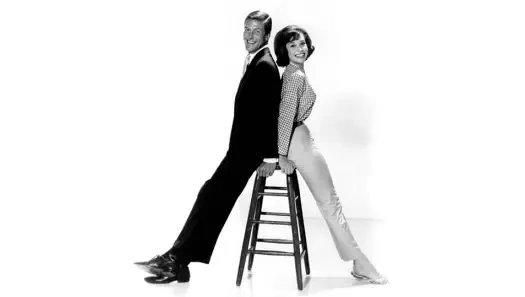HeroVet: Brig. Gen. Steve Ritchie, Air Force Ace

What is a "hero"? This overused term confuses celebrity with accomplishment in our media-driven age. Yet America does have heroes – real heroes, living and dead – who placed themselves in harm’s way, who risked life and limb to save the lives of others, who earned the mantle of hero because of their exploits in combat.
Retired Brigadier General Steve Ritchie, who three decades ago flew more than 800 combat hours in the F-4 Phantom during 339 missions in the skies over Southeast Asia, is an American hero.
He is the only Air Force pilot "ace" of the air war in Vietnam. He is the only American pilot to down five MiG-21s, the most sophisticated fighters in the North Vietnamese fleet. This singular feat, achieved between the 10th of May and the 28th of August, 1972 during his second tour of duty, made then-Captain Ritchie a member of an exclusive and rapidly shrinking fraternity: pilots who have downed at least five enemy aircraft.
The legendary Eddie Rickenbacker, who shot down 26 German planes during the War to End All War, led 119 American aces during the First World War. That number ballooned to 1,285 during World War II, shrank to 43 during the war in Korea, and dropped to two during the Vietnam War. (Navy flyer Randy Cunningham, now a California congressman, is the other ace.) It is more than likely, given the changing nature of air combat, that Steve Ritchie will be the last fighter-pilot ace.
Belated Ambition
As a kid, R. Stephen Ritchie, who hails from the small city of Reidsville, North Carolina, built model airplanes. His father, who was drafted during the Second World War and served with Patton’s Third Army in Europe, learned to fly after the war on the GI Bill. His passion, however, didn’t flow down to his son.
Even though he "really wasn’t all that interested in flying," Steve entered the Air Force Academy in 1960 at the urging of a buddy on his high school football team. He liked the idea of being part of something new, and he thought everyone there would be "the best of the best." He wasn’t far off the mark. Before he graduated four years later, he made his mark as a starting halfback on the Falcon football team; his last game was played in the 1963 Gator Bowl.
Armed with a B.S. in engineering science and a newfound excitement about flying gleaned during pilot indoctrination in a Cessna T-37 "Tweety Bird," Steve entered pilot training at Laredo, Texas. He graduated first in his class. During his initial assignment in flight test operations at Eglin Air Force Base in Florida, he transitioned from the Lockheed F-104 Starfighter to the faster, more mobile F-4 Phantom.
In 1968, Steve went to war, flying with the 366th Tactical Fighter Wing (Gunfighters) out of DaNang Air Base. He flew the first official F-4 Fast-FAC mission in Southeast Asia. After 195 missions, he was assigned to the USAF Fighter Weapons School at Nellis Air Force Base, Nevada. He was one of the youngest instructors in the school’s history.
Even though "we were losing people every day for no reason," even though "most of us realized we were not there to win," Steve volunteered for a second combat tour in 1972. He was assigned to the famed 555th "Triple Nickle" Fighter Squadron at Udorn Air Base, Thailand. On May 10th, the day that Navy Lieutenant Randy Cunningham downed three North Vietnamese planes to become the war’s first pilot ace, Steve Ritchie scored his first kill during what was known as Operation Linebacker. His enthusiasm was dampened, though, by the downing of a Phantom piloted by his Air Force Academy classmate Bob Lodge.
Ritchie prepares for a mission in his F-4 Phantom Ritchie prepares for a mission in his F-4 Phantom
Unbeknownst to Steve and the others on this flight, Major Lodge’s backseater, Roger Locher, was able to eject safely. He would be rescued 23 days later in one of the most surprising and dramatic operations of the war.
Steve scored his second kill on Memorial Day. On July 8th, he downed two more MiG-21s with three missiles in less than a minute and a half.
The Ultimate in Multitasking
Being a fighter pilot in combat, Steve explained during a telephone conversation from his home in Monument, Colorado, "is the ultimate in multitasking. All of my training, all the discipline I first learned as a cadet, came into play. You need a lot of mental agility to process a tremendous amount of information in an instant – not only about your craft but about enemy aircraft and anti-aircraft artillery.
"Some of this information needs to be acted on immediately. Some you have to revisit 10 seconds later, or 30 seconds later," he said. "Most can be discarded as the situation changes very rapidly. All the while, as you’re dodging enemy aircraft, anti-aircraft fire, and surface-to-air missiles, you need to coordinate and communicate with the rest of your team and all the other flights in the air. And airborne command-and-control aircraft. And AF RC-121’s over Laos. And Red Crown, the Navy ship off the coast of North Vietnam. "Living or dying," Steve Ritchie learned, "depends on winning or losing."
U.S. Air Force Ace Capt. Steve Ritchie in his F-4 aircraft U.S. Air Force Ace Capt. Steve Ritchie in his F-4 aircraft. USAF Photo
After he scored his fifth victory on August 28th, Steve was pulled from combat. Should he be downed and captured, he was informed, his loss would be a propaganda victory for the North Vietnamese.
War and Remembrance
It was the day his closest friend, Woodie Parker, was lost that was Steve Ritchie’s hardest day ever. It was April 24, 1968. "We were on alert. He had been my backseater but because of a scheduling mistake he was flying that night with an aggressive lieutenant colonel. They flew into the ground while taking a closer look for some enemy trucks.
"It was," Steve rued, "a wasted mission."
Thirty years later, when his friend’s remains were uncovered and identified, Steve, then a brigadier general in the Air Force Reserve, flew to Hawaii to escort his friend to Washington, D.C. for burial in Arlington National Cemetery.
"I was in first class," Steve said. "They treated me very nicely because they knew my friend was in a casket in cargo. There I was, having steak and champagne, with tears rolling down my face."
A Very Unusual Career
During his tenure in the Air Force, the Colorado Air National Guard, and the Air Force Reserve, Steve Ritchie learned the importance of teamwork, the joys of camaraderie, the value of integrity. He learned that he was able to perform "under extremely difficult circumstances." And he learned "to count on someone else when it really counts."
When he left the Air Force in 1974 as a decorated combat veteran – among his decorations are the Air Force Cross, four Silver Stars, 10 Distinguished Flying Crosses, and 25 Air Medals -- he ran for Congress in his home state, at the urging of Senator Barry Goldwater. It was not a salutary experience. "I would much rather be flying in combat," he said.
He returned to Colorado to work as a special assistant to Joseph Coors, traveling extensively to speak on the military, private enterprise, and economic education. He went on to serve in the Reagan Administration. He has become a popular speaker at aviation events – for the 50th anniversary celebration of the U.S. Air Force, he flew an F-4E Phantom II at Nellis Air Force Base, Nevada, performing aerial feats before an international assembly and what was described as the largest single meeting of air and space leaders in history.
Airliners Net Photo Ritchie fittingly flew this F-4E, specially painted in Vietnam era markings, at the USAF 50th anniversary Airshow at Nellis AFB in April 1997. This Phantom was one of two painted for this occasion as Steve Ritchie’s Vietnam Mig Killer, which actually was 66-7463 for three kills and has been withdrawn from service long before. Photo by Gerhard Plomitzer
He also is a motivational speaker of some renown, offering insights on integrity and leadership to legions of young people across the country. And he still spends time with young fighter pilots – so young that the Phantom is somewhat of an anachronism to them.
In his peripatetic existence, he estimates that he’s traveled over five million miles. He’s moved 29 times and lived in 17 homes. Now he’ll live nowhere else than in Colorado.
Through all the years, the loss of so many friends, colleagues, and classmates during the war in Vietnam weighs on him still. His life is in part a testament to their deaths. He quotes a passage from Army veteran Nelson DeMille’s novel "Up Country" to summon his feelings:
"I remembered those hills and the cold rain of February 1968. Most importantly, I remembered the men, who were really boys, grown too old before they’d finished their boyhoods, and who had died too young, before any of their dreams could come true.
"I always felt I had been living on borrowed time since 1968, and each day was a day that the others never had; so to the best of my ability, whenever I thought about it, I’d tried to live the days well and to appreciate the extra time."
Words to live by, from an American hero.
Image Credit: https://fightersweep.com/3095/fighter-legend-brigadier-general-steve-ritchie/



